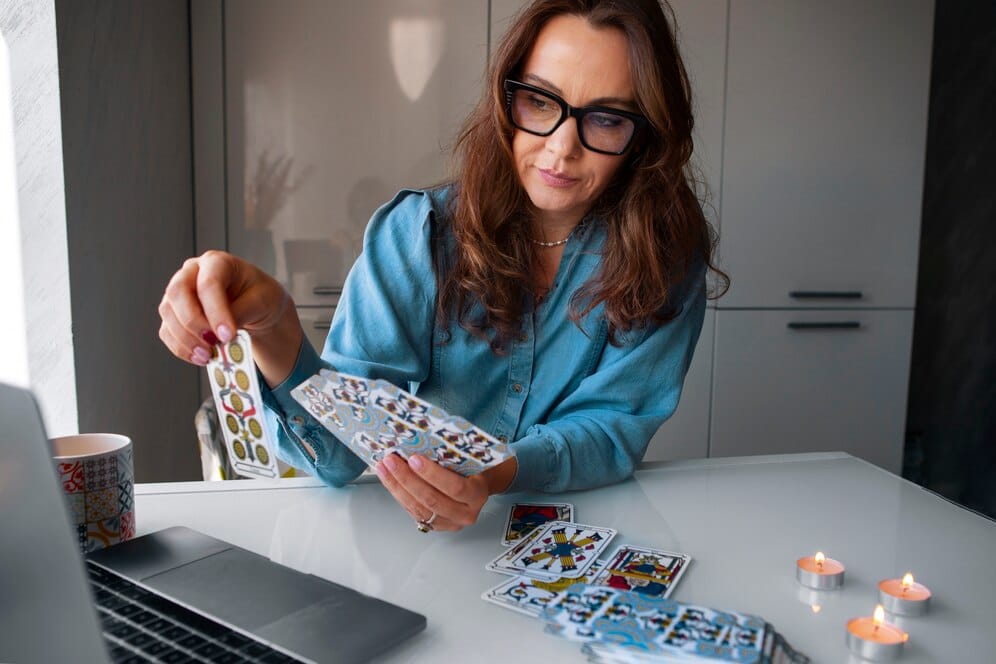Unveiling the Mysteries of Tarot
Embark on a journey to uncover the ancient origins and modern-day significance of Tarot. Explore the rich history, symbolism, and diverse uses of Tarot cards, from divination and self-reflection to spiritual guidance and personal growth.


Introduction
Tarot, with its enigmatic symbols and mystical allure, has captured the imagination of people for centuries. In this article, we embark on a journey to unravel the mysteries of Tarot, exploring its fascinating history and its enduring relevance in the modern world.
Origins of Tarot
The origins of Tarot can be traced back to 15th-century Europe, where the earliest known Tarot decks were created as playing cards. Over time, Tarot evolved from a simple game into a powerful tool for divination, meditation, and spiritual exploration.
Structure and Symbolism
A standard Tarot deck consists of 78 cards, each with its own unique symbolism and meaning. The deck is divided into two main sections: the Major Arcana, which represents significant life events and spiritual lessons, and the Minor Arcana, which reflects everyday experiences and challenges.
The Art of Tarot Reading
Tarot reading is a practice that involves interpreting the symbolic imagery of Tarot cards to gain insight into past, present, and future events. Tarot readers use various spreads and techniques to explore different aspects of a person's life, offering guidance, clarity, and perspective.
Modern-Day Uses
In the modern era, Tarot has expanded beyond its traditional role as a tool for divination. Many people use Tarot cards for self-reflection, personal growth, and spiritual development. Tarot can also be used as a creative and intuitive tool for artists, writers, and performers.
Tarot and Psychology
Psychologists and therapists have increasingly recognized the therapeutic potential of Tarot as a tool for self-exploration and healing. Tarot cards can serve as catalysts for introspection, helping individuals gain insight into their thoughts, feelings, and behaviors.
Tarot in Popular Culture
Tarot has permeated popular culture, appearing in films, literature, and art as a symbol of mystery, intrigue, and spirituality. From Hollywood movies to bestselling novels, Tarot continues to captivate audiences and inspire creative expression.
Ethical Considerations
While Tarot can be a powerful tool for self-discovery and personal growth, it is essential to approach its practice with respect, integrity, and ethical awareness. Tarot readers should prioritize consent, confidentiality, and empowerment when offering readings to others.
Conclusion
In conclusion, the mystique of Tarot lies in its ability to unlock the depths of the human psyche and illuminate the path to self-awareness and enlightenment. Whether used for divination, meditation, or creative inspiration, Tarot remains a timeless and versatile tool for exploration and transformation.
FAQs
- What is Tarot?
- Tarot is a deck of cards with symbolic imagery used for divination, self-reflection, and spiritual exploration.
- How does Tarot reading work?
- Tarot reading involves interpreting the symbolic imagery of Tarot cards to gain insight into past, present, and future events.
- What are the Major Arcana and Minor Arcana?
- The Major Arcana represents significant life events and spiritual lessons, while the Minor Arcana reflects everyday experiences and challenges.
- Can Tarot be used for therapy?
- Yes, Tarot can be used as a therapeutic tool for self-exploration, introspection, and healing, often in conjunction with traditional psychotherapy techniques.
- Is Tarot associated with any religion?
- While Tarot has roots in various mystical and spiritual traditions, it is not inherently tied to any specific religion and can be practiced by people of diverse beliefs and backgrounds.